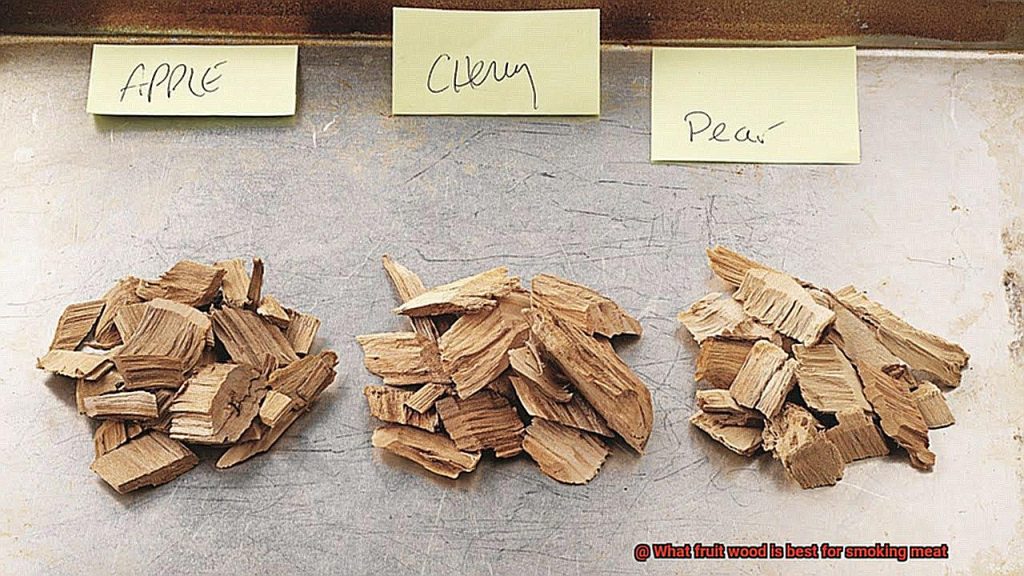Are you tired of the same old wood chips for smoking meat? Want to add a fruity twist to your next smoke session? Look no further than fruitwood smoking. While traditional woods like hickory and oak are great, adding apple, peach, apricot, or cherry wood can take your meat to the next level.
Fruit woods provide a sweeter and milder smoke flavor compared to heartier woods. They also infuse a hint of fruity aroma into the meat, creating a delicious and unique flavor profile. But which fruit wood is best for smoking meat? Let’s take a closer look.
First up is applewood – one of the most popular fruit woods for smoking meat. It provides a mild and slightly sweet smoke flavor that pairs well with pork, chicken, and fish. Peach wood adds subtle sweetness to beef and lamb. Apricot wood is perfect for poultry and pork while cherry wood adds sweet yet tart flavors that elevate beef and pork.
The key is to experiment with different combinations until you find your perfect pairing. So why not take your taste buds on an adventure with fruitwood smoking? Your palate will thank you.
Contents
What is Fruit Wood?
Look no further than fruit wood. This type of wood, derived from fruit-bearing trees such as apple, cherry, peach, pear, and plum, is beloved for its sweet and mild flavor that enhances the taste of smoked meats. But why is fruit wood so popular?
Firstly, fruit wood burns evenly and produces consistent smoke, making it perfect for meats that require a milder flavor. Unlike other types of wood that can produce overpowering smoke, fruit wood offers a subtler smoke that won’t overwhelm the meat. However, it’s important to only use dry wood that has been aged for at least six months. Wet or green wood can produce an unpleasant flavor and even spoil the meat, ruining all your hard work.
But which type of fruit wood should you be using for various meats? Applewood is a great option for smoking pork, while cherrywood pairs well with poultry. If you’re smoking pork and want some variety, try using peach or plum wood. If beef or lamb is on the menu, pearwood is the way to go. And if you’re looking for something heartier, hickory wood is a popular choice that works well with beef, pork, and poultry. Although not technically a fruit wood, hickory has a nutty and slightly sweet flavor that can add depth to your dishes.
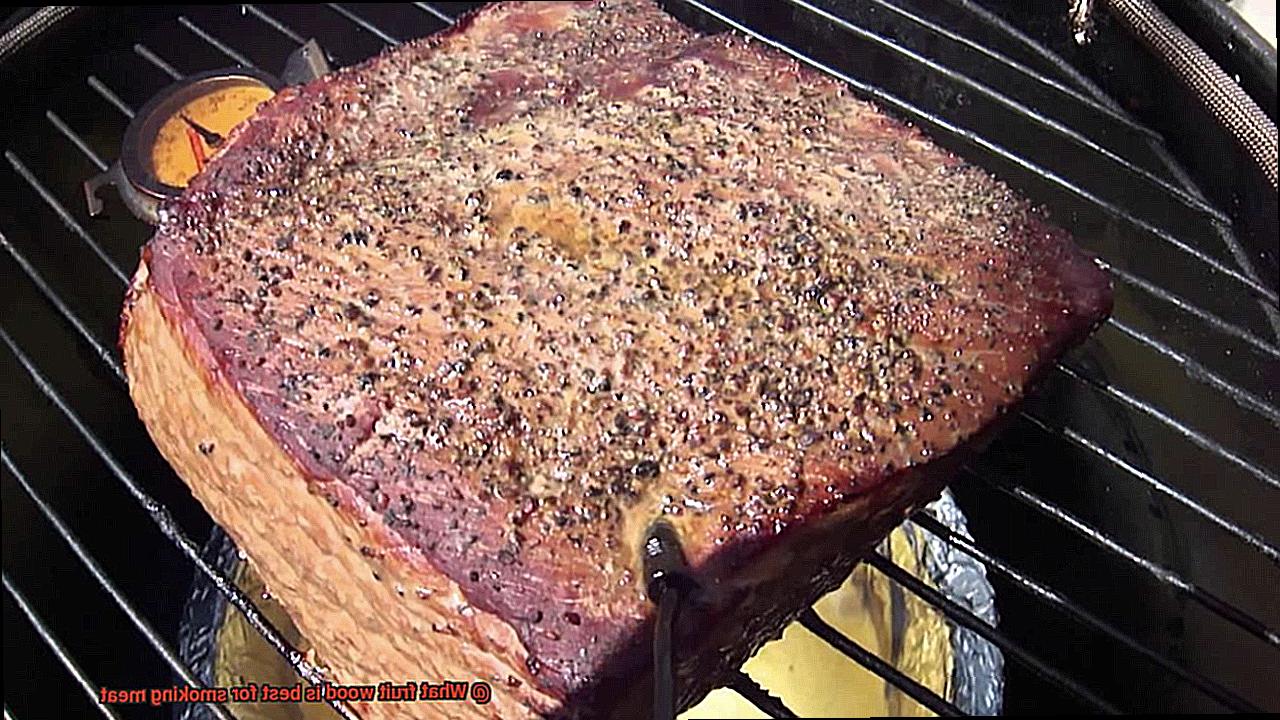
For those feeling adventurous, consider trying grapevine wood. Its bold and fruity flavor pairs well with beef and lamb but be careful as it burns hot and fast.
The Benefits of Smoking Meat with Fruit Wood
Then it’s time to elevate your outdoor cooking game by smoking meat with fruit wood. Not only does it offer a unique and delicious flavor that can’t be achieved with traditional hardwoods, but it also boasts a host of benefits that will make you wonder why you ever used anything else.
First and foremost, fruit wood smoke has a mild flavor profile that won’t overpower the natural flavors of your meat. Unlike hardwood smoke, which can easily mask the taste of your dish, fruit wood smoke allows the full range of flavors to shine through. This makes it an excellent choice for meats that are already flavorful on their own, such as pork or salmon.
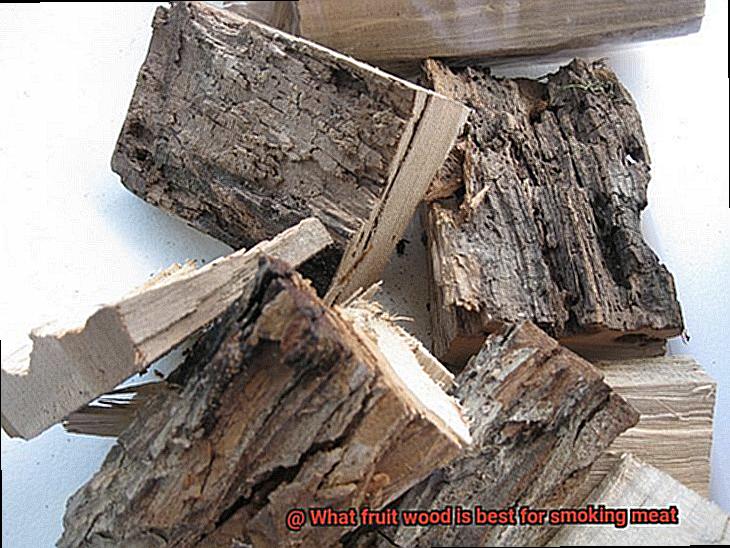
But that’s not all – fruit wood is also incredibly versatile. Depending on the type of wood you choose, you can achieve different flavor profiles that will complement different types of meat. For example, applewood imparts a sweet and subtle flavor that pairs perfectly with pork or poultry, while cherrywood has a slightly tart flavor that complements beef or game meats.
And if efficiency is your thing, then you’ll love how clean and hot fruit wood burns. Because it burns more efficiently than hardwoods, you’ll need less wood overall to achieve the desired level of smokiness. This means less ash to clean up and a cleaner burn that will keep your grill running smoothly.
But perhaps the most surprising benefit of smoking meat with fruit wood is its health benefits. Fruit woods contain antioxidants and other nutrients that are beneficial to human health, and these nutrients are released during the smoking process and absorbed by the meat. This means that your grilled dishes can actually be healthier than dishes made using traditional grilling methods.
Applewood: The Most Popular Choice
If you’re a fan of outdoor cooking, then you know that smoking your meat is the ultimate way to elevate your dishes. And when it comes to smoking wood, applewood is the most popular choice for good reason. This wood is known for its mild and sweet flavor that perfectly enhances the natural taste of your meat.
But what makes applewood so special? Let’s take a closer look at the research notes to find out.
First off, applewood is widely available and can be found in most grocery stores or online. This accessibility makes it an easy choice for grill masters of all levels. Plus, it’s versatile enough to be used with a variety of meats, including poultry, pork, fish, beef, and lamb.
But what really sets applewood apart is its subtle sweetness. Unlike other woods that can overpower the taste of your meat, applewood adds just the right amount of flavor without being too strong. It’s perfect for those who prefer a milder smoke flavor.
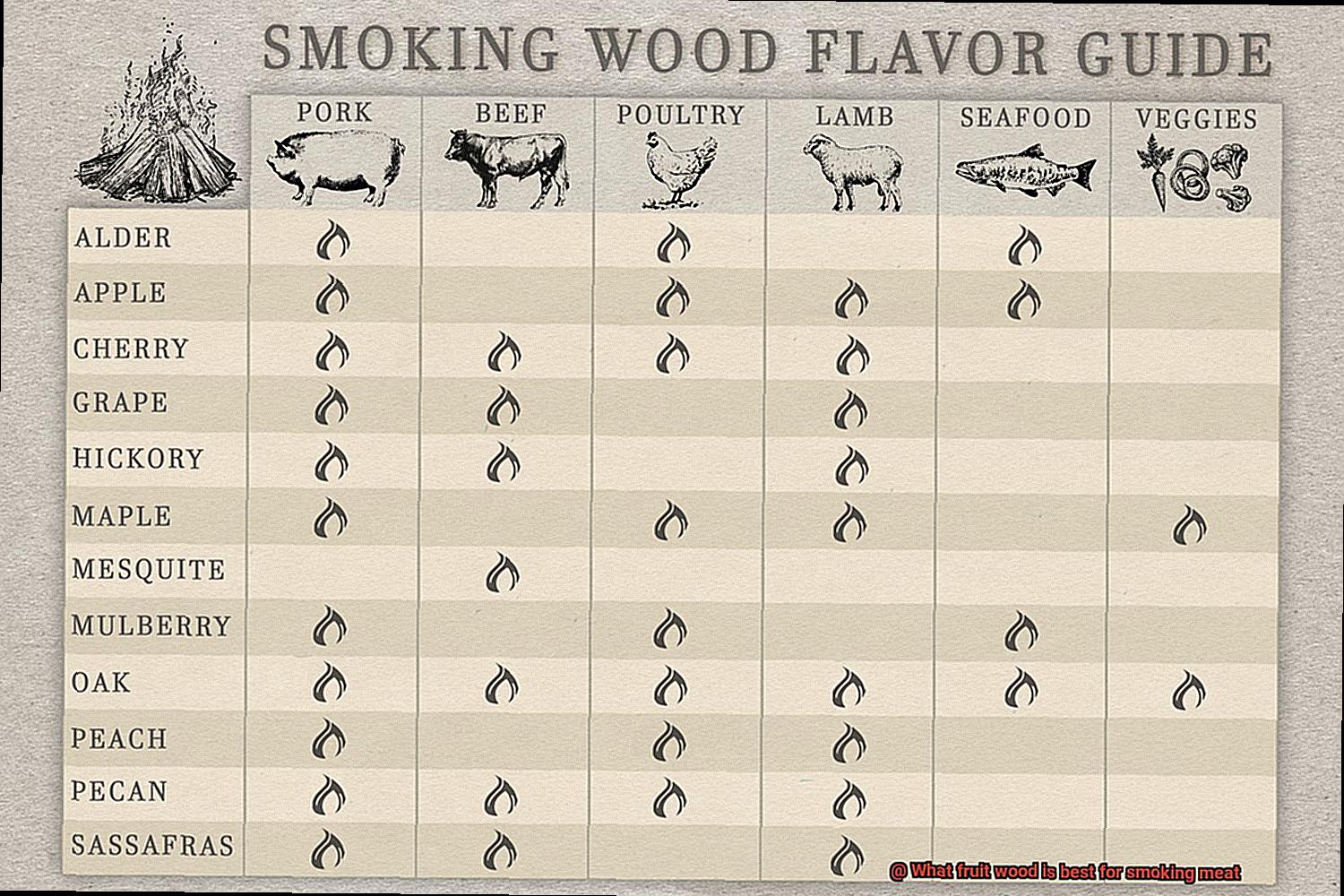
Applewood also pairs well with fruit-based marinades or rubs, enhancing the overall taste of the dish. So if you’re looking to add a fruity twist to your smoked meat, applewood is the way to go.
Of course, it’s important to use properly seasoned and dried wood when smoking your meat. Wet or green wood can produce bitter smoke and ruin the taste of your dish. To prevent this, soak your applewood chips in water for at least 30 minutes before use to prevent them from burning too quickly.
Cherry Wood: Mild and Fruity Flavor
Cherry wood is a popular choice among experts for its mild yet distinct flavor profile that complements poultry, pork, and beef without overpowering their natural sweetness.
Before starting your smoking session, ensure that your cherry wood is properly seasoned and dried to achieve an even burn and the desired flavor profile. Cherry wood comes in various forms, including chips, chunks, and logs. Chips are ideal for shorter cooking times, while chunks and logs are better suited for longer smoking sessions.
Compared to apple wood, cherry wood has a slightly stronger taste with reddish-pink hues that add to the visual appeal of your smoked meats. This wood is versatile enough to complement a variety of meats and can be easily found at most hardware stores or online retailers.
Hickory Wood: Nutty and Sweet Flavor
Hickory wood is renowned for its nutty and sweet flavor profile that will leave your taste buds dancing with delight.
So what sets hickory wood apart from the rest? The answer lies in its high concentration of natural oils, which infuse the meat with a rich and smoky taste that’s difficult to replicate with other types of wood. What’s more, hickory wood produces a thick smoke that helps create a beautiful bark on the outside of your meat.
But here’s the catch: too much hickory smoke can overpower the flavor of your meat, leading to bitterness or acridness. That’s why it’s crucial to use hickory wood in moderation, pairing it with milder woods such as apple or cherry for a well-rounded flavor profile.
And let’s not forget about versatility. Whether you’re hot smoking or cold smoking, hickory wood is a fantastic choice for all types of meat. From beef brisket to pulled pork to smoked chicken wings, the nutty sweetness of hickory wood will add an extra layer of depth and complexity.
Peach Wood: Sweet and Subtle Taste
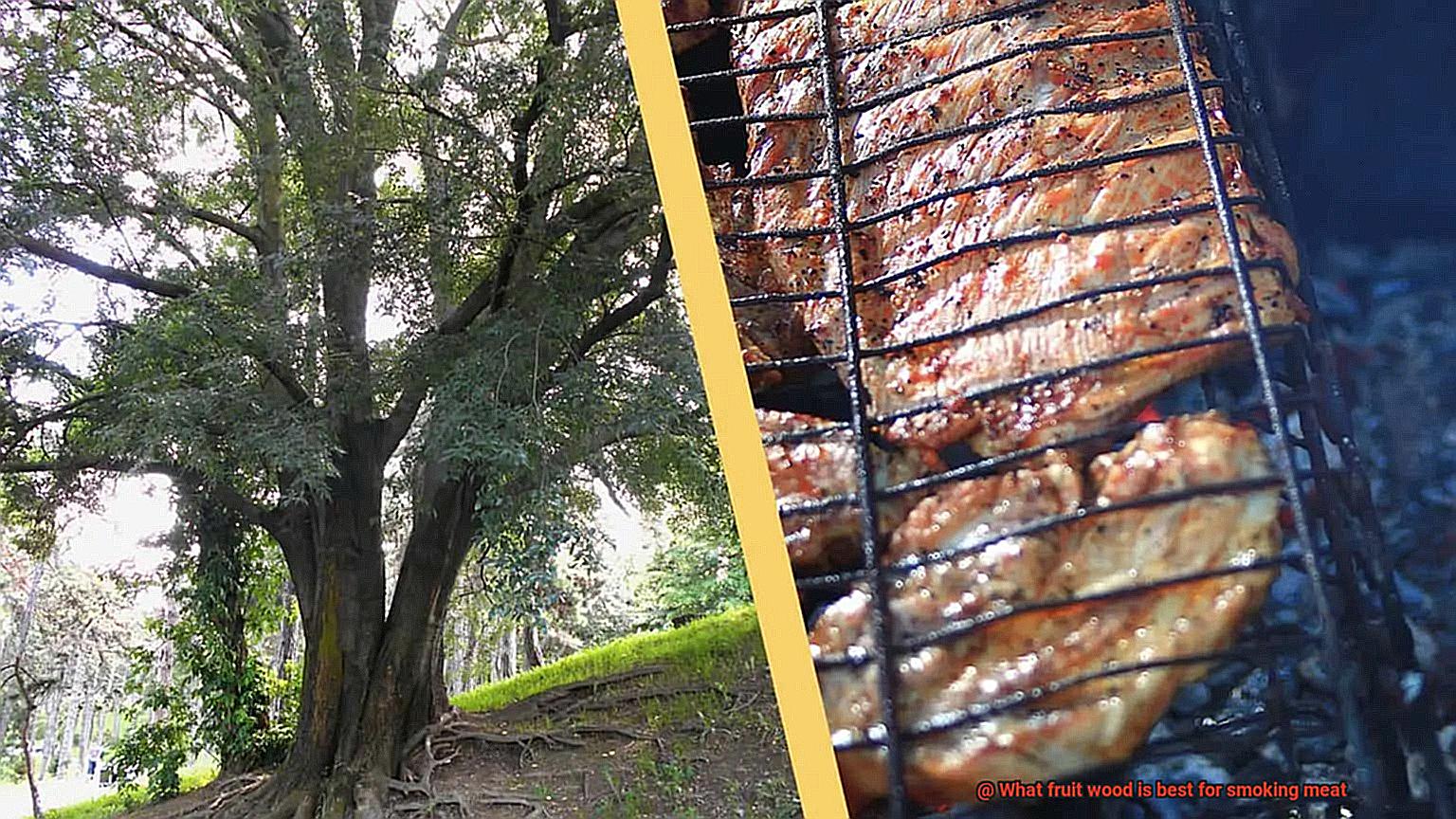
If you’re on the hunt for a fruit wood that will add a touch of sweetness and subtlety to your BBQ, look no further than peach wood. This wood has gained popularity among BBQ enthusiasts for its unique flavor profile that pairs perfectly with pork, chicken, and fish. Not only does it complement the natural taste of the meat, but it also adds a mild fruity flavor that is sure to impress your taste buds.
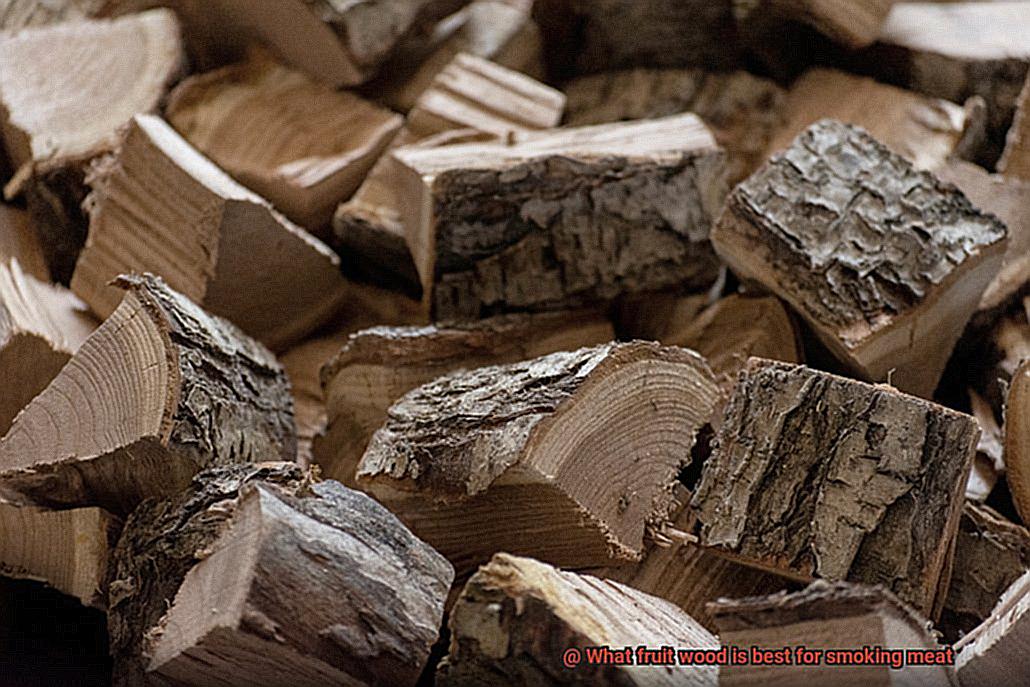
Peach wood is also known for producing a delicate smoke that doesn’t overpower the meat’s flavor. Its light-colored smoke gives the meat a beautiful golden hue without being too strong. Additionally, its consistent heat and slow burn rate make it an ideal option for smoking. The thin bark of the wood makes it easy to handle and provides a smooth burning experience.
Another reason why peach wood is a favorite among BBQ enthusiasts is its affordability and availability. It can be found in many parts of the country where peaches are grown, making it a cost-effective option compared to some other fruit woods.
When using peach wood for smoking, it’s important to soak the wood chips or chunks in water for at least 30 minutes before using them. This prevents them from burning too quickly and producing bitter smoke. It’s also recommended to use smaller pieces of wood to avoid over-smoking the meat.
Grapevine Wood: Bold and Fruity Flavor
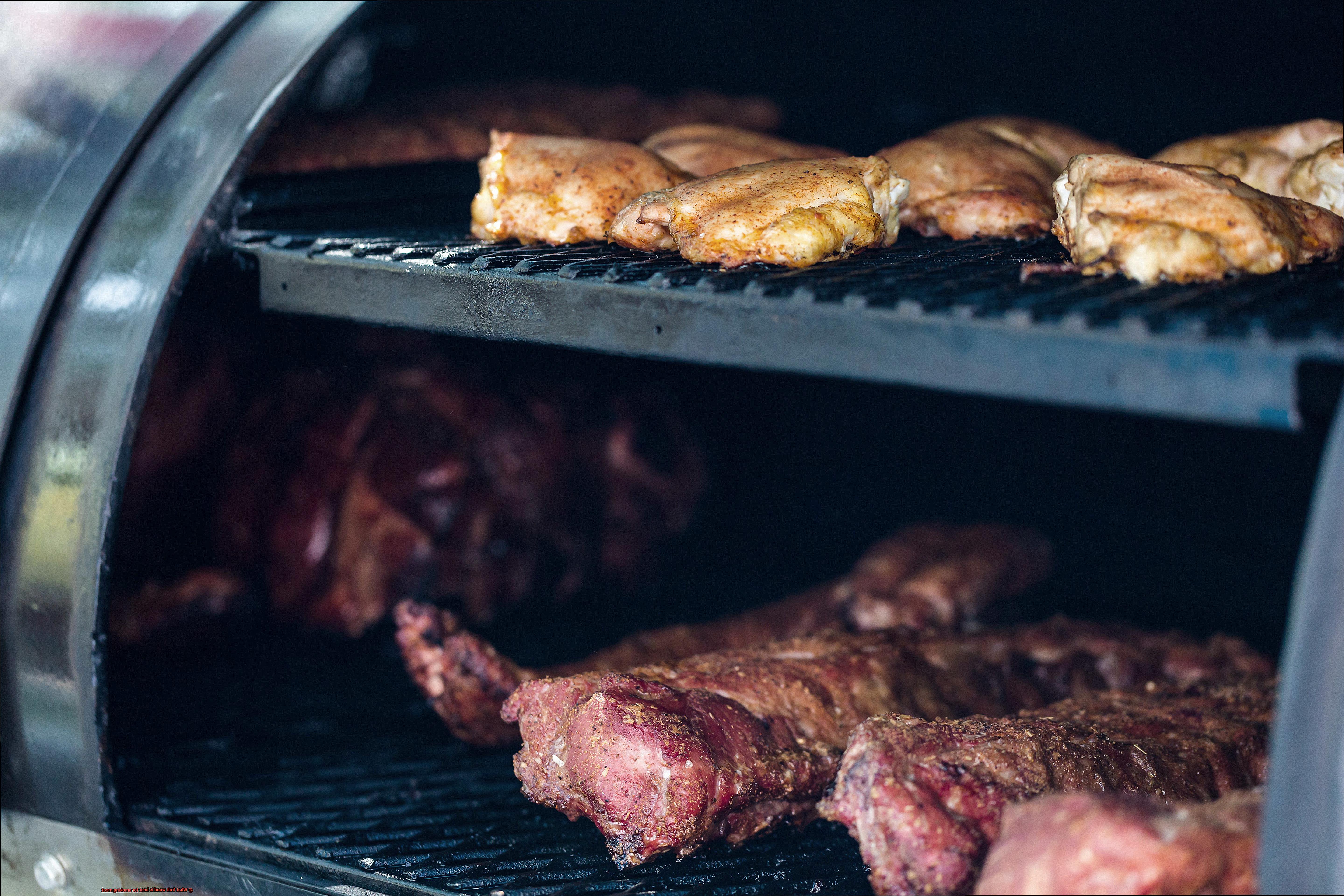
Look no further than grapevine wood. This lesser-known fruit wood, commonly used in California wine country, imparts a bold and fruity taste that is sure to impress. As an expert on the topic of “Grapevine Wood: Bold and Fruity Flavor,” let me share with you the benefits and considerations of using this unique wood for smoking.
Let’s start with the flavor profile. Grapevine wood has been described as a perfect blend of oak and fruitwood, with a subtle sweetness and slightly tangy finish. This distinctive taste adds a whole new dimension to your BBQ, making your grilled meats stand out from the rest.
One of the advantages of grapevine wood is that it burns hot and fast, making it an excellent choice for grilling. However, due to its intense flavor, it is best used in moderation or combined with other milder woods like apple or cherry. This allows you to balance out the taste and achieve the perfect flavor.
It is crucial to make sure that the grapevine wood is properly seasoned and dried before use. Green or wet wood can produce harsh smoke that ruins the flavor of your meat. Additionally, it is important to keep the grapevine wood away from any chemicals or pesticides that may have been used on the vines.
In short, grapevine wood is a fascinating option for those who want to try something new and exciting in their BBQ. To summarize:
- Grapevine wood has a bold and fruity flavor.
- It burns hot and fast, making it great for grilling.
- It should be used in moderation or combined with milder woods.
- Proper seasoning and drying are essential.
- Avoid any chemicals or pesticides that may have been used on the vines.
Considerations When Choosing a Fruit Wood for Smoking Meat
Before you start throwing just any fruit wood into your smoker, there are some critical considerations to ponder.
The first factor to consider is the type of meat you’re smoking. Each type of meat requires a different level of smoke intensity and flavor. For instance, if you’re smoking poultry or pork, it’s best to stick with milder fruit woods like cherry or apple. However, beef and game meats can handle stronger fruit woods like hickory or mesquite.
Next on the list is the color of smoke produced by your fruit wood. You want to aim for a clean and consistent smoke that enhances the flavor of your meat without overpowering it. Look for fruit woods that produce a blue smoke as they tend to provide a mild and consistent smoke without leaving behind any bitter aftertaste.
Lastly, don’t forget about the availability and cost of your chosen fruit wood. Some types may be more readily available in certain regions or may be more expensive than others. It’s important to select a fruit wood that is both affordable and easily accessible in your area.
He-Nw5-LMrE” >
Conclusion
In conclusion, fruit wood smoking is a game-changer for meat lovers looking to add a distinct flavor to their dishes. While traditional hardwoods like hickory and oak are solid choices, fruit woods such as apple, peach, apricot, cherry, and grapevine offer a milder yet sweeter smoke that enhances the natural taste of your meat. Each type of fruit wood boasts its own unique flavor profile that complements different types of meat.
When selecting a fruit wood for smoking meat, it’s crucial to consider factors like the type of meat you’re smoking and the color of smoke produced by the wood. Additionally, availability and cost play a role in your decision-making process. Always use properly seasoned and dried wood to avoid unpleasant flavors from ruining your dish.
Fruit woods not only offer an exceptional flavor but also come with numerous health benefits. They contain antioxidants and other nutrients that are released during the smoking process and absorbed by the meat.
So why settle for ordinary wood chips when you can take your taste buds on an adventure with fruitwood smoking? With so many options available, there’s no excuse not to experiment with different combinations until you find your perfect pairing.

